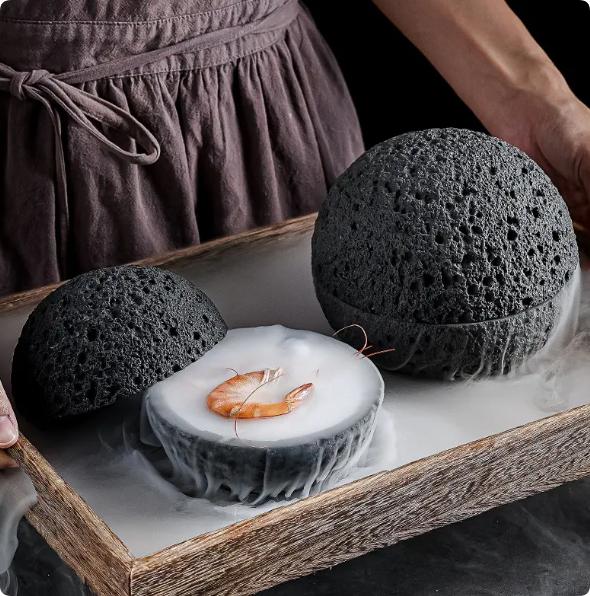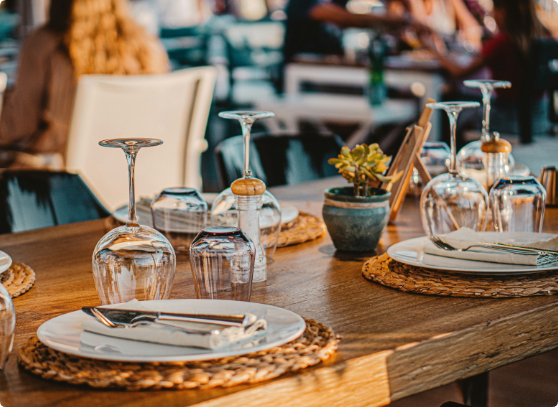From the cozy family trattorias of Florence to the high-end ristorantes in Milan, Italian restaurants have one thing in common: an unwavering commitment to presentation. And it’s not just about the food. The choice of ceramic tableware — especially durable ceramic dinnerware for Italian cuisine — plays a pivotal role in shaping the overall dining experience.
Whether you’re a global kitchenware buyer or a cross-border seller, understanding what makes ceramic pasta plates for restaurants stand out in the Italian market is essential. Italian restaurateurs are looking for more than function — they want soul, storytelling, and timelessness on every plate.
Ceramics and the Italian Table: More Than Just a Plate
Italy’s culinary rituals demand tableware that reflects authenticity. Each region has its own aesthetic: you might see hand-glazed ceramic soup bowls in Tuscany and minimalist white serving plates in Lombardy. This blend of tradition and modernity means ceramic continues to be a dominant choice for those sourcing restaurant-quality ceramic dishes for Italian cuisine.

Ceramics not only offer rich texture and warmth but also have a way of enhancing the visual appeal of pasta, risotto, and seafood, giving dishes a true sense of place.
What Do Italian Restaurants Prioritize in Ceramic Tableware?
Restaurants in Italy, regardless of their size or budget, generally seek the following attributes in their tableware sourcing process:

✔️ Aesthetic Appeal with Regional Identity
Buyers often request Italian-style ceramic dinner sets that blend in with the decor, whether rustic or contemporary. Colorful rims, artisanal brushstrokes, and organic shapes can instantly evoke the mood of a Sicilian feast.
✔️ Functional Durability
Commercial-grade ceramic plates for restaurants need to survive repeated dishwasher cycles, temperature changes, and back-of-house handling — all without chipping or fading.
✔️ Thermal Properties
Serving dishes warm is a priority. That’s why heat-retaining ceramic lasagna plates and oven-to-table bakeware for Italian meals are common purchases.
✔️ Brand Personalization
From engraved logos to traditional Italian patterns, restaurants often request custom logo ceramic tableware sets that reinforce their identity.
What’s the Difference Between Trattorias and Fine Dining Needs?
Here’s how the requirements vary between casual and upscale Italian restaurants when sourcing ceramic dinnerware:
Trattoria


Fine Dining Ristorante
| Feature | Traditional Trattoria | Fine Dining Ristorante |
|---|---|---|
| Design Style | Rustic, vintage-inspired with hand-painting | Monochrome, refined, often matte or gloss white |
| Material Feel | Heavy-duty, textured | Lightweight, elegant finish |
| Customization | Regional symbols, handwritten-style logos | Embossed monograms or custom rim accents |
| Focus Items | Ceramic pasta bowls, bread plates, water jugs | Ceramic tasting plates, gourmet dessert dishes |
| Product Life Expectancy | 3–5 years with heavy use | 1–2 years with seasonal replacement |
| Glaze Preference | Reactive or speckled glazes | Uniform satin or pearlescent glazes |
Design Elements That Win Italian Buyers
When international buyers approach ceramic factories, they often emphasize these winning features:
- Earthy Base Colors like sand beige, soft white, or sage green, ideal for ceramic appetizer plates for Mediterranean dishes.
- Stackable Forms with reinforced rims, particularly appreciated in small trattorias with limited storage space.
- Customizable Rims or Edges — a subtle nod to heritage that goes a long way in tailored ceramic dinnerware for Italian branding.
- Microwave, Oven, and Dishwasher Safe functionality is essential for restaurant-use ceramic baking dishes.
- Food-Safe Lead-Free Glaze as European health standards demand full compliance.
These design principles make products more appealing in buyer inquiries and product listings on platforms such as Faire, Ankorstore, or even Amazon Business.
How Global Buyers Can Cater to the Italian Market
🔹 Adapt to the Regional Taste
Sicilian restaurants prefer bright ceramic pizza plates with decorative designs, while northern regions opt for clean and elegant matte finishes. Matching local aesthetics is key to conversion.
🔹 Flexibility with MOQ and Design
Hospitality buyers are often sourcing for multiple outlets or boutique chains. Offering low MOQ custom ceramic tableware sets makes your products more accessible.
🔹 Sell the Story
Use marketing content that includes phrases like “crafted for Italian chefs” or “designed for pasta lovers” when describing ceramic pasta bowl collections for restaurants. Italian buyers value culture-rich storytelling.
FAQ: People Also Ask
Q1: What is the best type of ceramic plate for Italian pasta dishes?
Shallow wide-rim ceramic pasta plates are ideal, allowing for both sauce presentation and portion balance. Matte glazes are often preferred for a modern trattoria feel.
Q2: Can ceramic tableware be used in commercial ovens?
Yes, many oven-safe ceramic baking dishes are designed for restaurant use. It’s important to verify thermal shock resistance with the supplier.
Q3: Are hand-glazed plates suitable for restaurants?
They are, especially in rustic or boutique settings. Just ensure they are food-safe ceramic dinnerware for restaurants with consistent production quality.
Q4: How long does ceramic tableware typically last in restaurants?
With regular use, commercial ceramic dinner sets can last 2–5 years, depending on thickness, glaze, and handling.
Satisfying the Italian Standard Starts at the Source
From vintage-style trattorias to modern gastronomic temples, Italian restaurants demand more than just functionality from their tableware. They want soul, storytelling, and strength — all baked into the ceramic.
For global buyers and brand creators looking to cater to this market, partnering with a Chinese ceramic tableware factory that offers flexible OEM and ODM services is an efficient way to meet these needs. With the right combination of durability, design, and custom branding, your ceramic tableware can become part of the Italian dining tradition — one pasta plate at a time.

